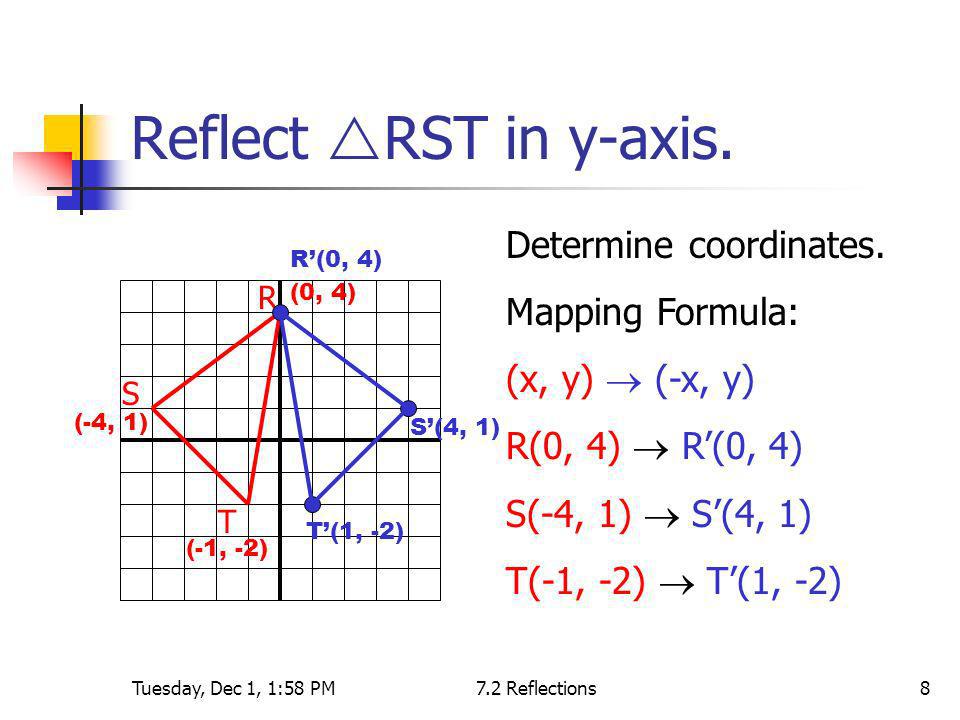

In some cases, the line of reflection may be on the edge – or even inside – the figure. Notice how the three properties we just discussed hold true, but also notice how, to actually create a reflection, it often involves simply counting the distances between the line of reflection and the points, or adding and subtracting coordinates. Now, here is a trapezoid being reflected over three different lines. You’ll also notice that all corresponding points on the preimage and image are the same distance from the line of reflection but in the opposite direction.Īnd lastly, the line of reflection bisects all segments connecting corresponding points of the preimage and image. Now there are a few things to notice here:įirstly, the preimage and image are congruent, but “flipped”. Point A on the preimage corresponds to point A’ on the image, and so forth. Prime notation designates the figure that is the image. The triangle on the right is our reflected figure, or image, named Triangle A’B’C’. The triangle on the left is our original figure, or preimage, named Triangle ABC.

Here’s a triangle reflected over the line x=7. We can reflect a figure in the coordinate plane over any line in the coordinate plane.

Let’s start by looking at reflections over a line. Like I mentioned, there are two main types of reflections: reflections over a line and reflections on a point. This idea is related to what happens when we reflect figures on the coordinate plane. When we think of the term reflection, we most likely think of looking in a mirror or a still body of water. Hi, and welcome to this video about reflection! In this video, we will explore reflection of a figure over a line and reflection of a figure on a point.


 0 kommentar(er)
0 kommentar(er)
